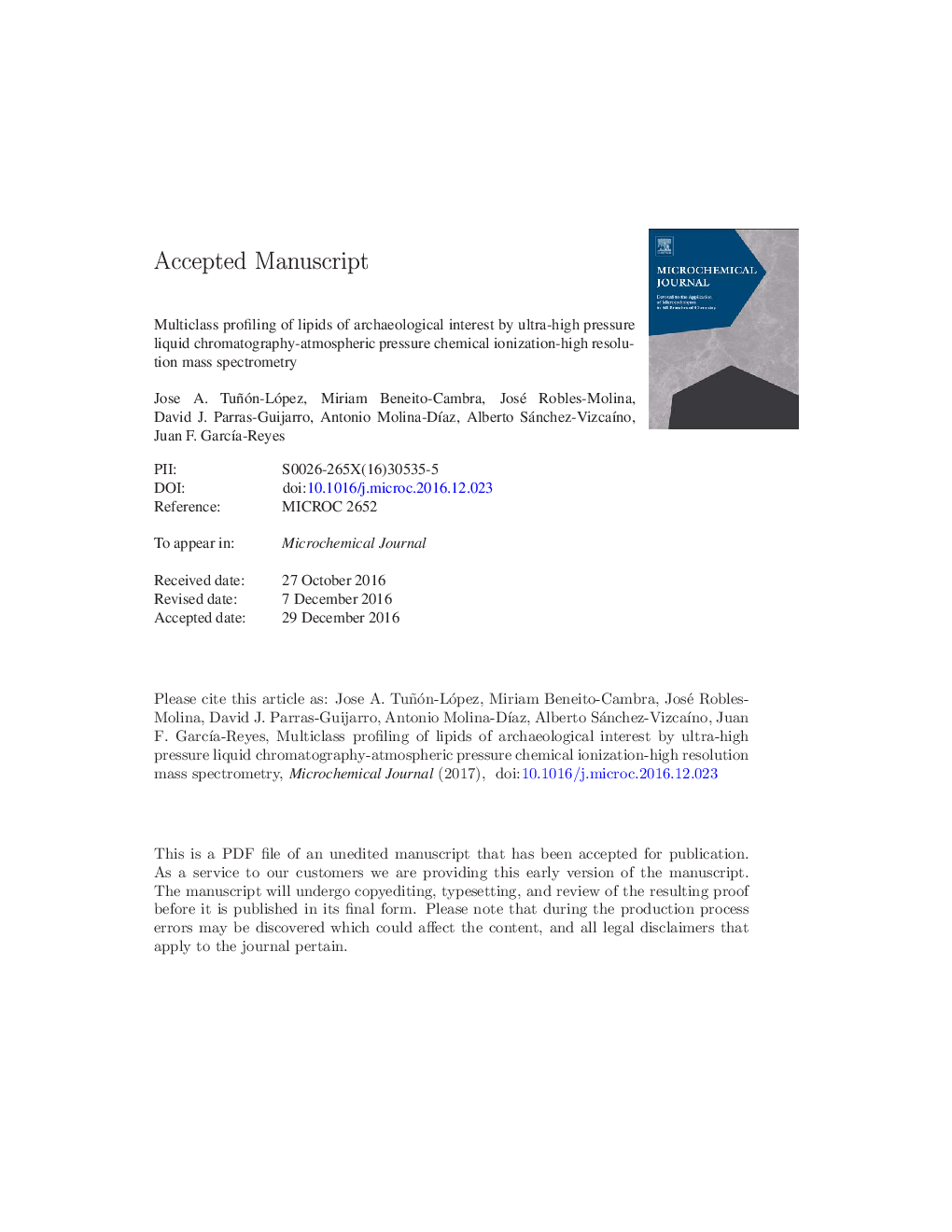| Article ID | Journal | Published Year | Pages | File Type |
|---|---|---|---|---|
| 5139154 | Microchemical Journal | 2017 | 35 Pages |
Abstract
In the present work, an analytical methodology for the comprehensive evaluation of multiclass lipids (including mono-, di- and triacylglycerols (MAGs, DAGs and TAGs) along with sterols) in archaeological ceramic vessels has been developed. It is based on the use of ultra-high pressure liquid chromatography-atmospheric pressure chemical ionization-high resolution mass spectrometry (UHPLC-APCI-HRMS) with a time-of-flight mass analyser operated in the positive ionization mode. The vaporizer temperature of the APCI source was found to exert a critical influence on the fragmentation exhibited by the different studied TAGs. This fragmentation information combined with accurate mass measurements enabled the unambiguous identification of the targeted species. From the chromatographic side, two different methods were developed using: (i) a 2.1 Ã 50 mm C18 high-throughput column (1.8 μm particle size), with MeOH/H2O 50:50 (v/v) and isopropanol (i-PrOH) as mobile phases and; (ii) a 4.6 Ã 150 mm C18 high-throughput column (with 1.8 μm particle size), with MeOH and i-PrOH as mobile phases. The first method involved a fast 12-min gradient, which enabled a fast and sensitive screening of the lipid content in the studied samples. The second 25-min confirmatory method provided a thorough TAGs separation. Both methods were successfully applied for the comprehensive analysis of lipid traces from archaeological ceramics with LOQs below 5 ng gâ 1 in most cases. The proposed methodology was applied on different ceramic samples, which belong to the Culture of the Iberians (6th-1st ct. BCE).
Related Topics
Physical Sciences and Engineering
Chemistry
Analytical Chemistry
Authors
Jose A. Tuñón-López, Miriam Beneito-Cambra, José Robles-Molina, David J. Parras-Guijarro, Antonio Molina-DÃaz, Alberto Sánchez-VizcaÃno, Juan F. GarcÃa-Reyes,
